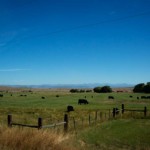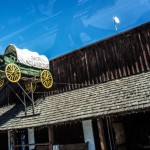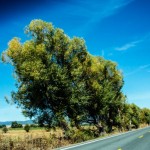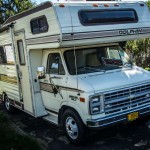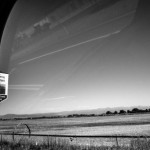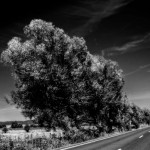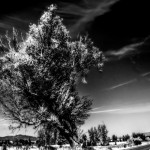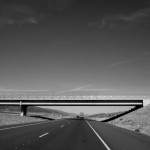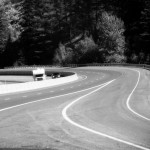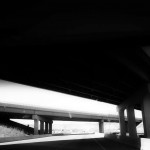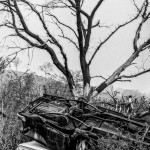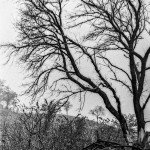Another Land Rover photographic trek into the Sierra Nevada mountain area of Northern California. Most of these pics are from the area north of Death Valley and south of Yosemite, if I recall, and take in the California border ghost town at Bodie, and include a bit of late day and early evening Mono Lake (with its salt formations arising from unusual drainage conditions) and other nearby wanderings.
Category: travel
rDay Five-Hundred-Fifty-Seven: Deviant Behavior in Boise
Sunday (yesterday, retirement day 557) I drove to Boise in the Blue Car for a day at PCA* Silver Sage Region’s “OktoberFAST” showing of about 140 cars of the Porsche marque, assembled by member/owners mostly from Boise, but with some from Oregon, Washington and even Colorado. The venue was something called The Village at Meridian, which seemed to be some shopping center developer’s notion of an English or European village, albeit with upscale or trendy shops. Several of its somewhat narrow streets were blocked off, and when you stood at an intersection you could see nothing but Porsche for as far as the eye could see in any direction. Well, that and hordes of humans and dogs, that is. In fact the crowded foot traffic and the interplay of bright sun with deep shadows cast by surrounding buildings — together with the abundance of shoppers and visitors jumping in front of the cars to do selfies — made photography quite challenging. I chatted briefly with a couple of pro-level photographers who also complained about the shooting conditions. But nevertheless, I do have a few photos to document the experience (and I will add about 60 – 80 more to my car blog for a more specialized audience less likely to be completely bored):
My favorite car on display? Probably a 1965 “356” model, said to be a daily driver, running skinny studded snow tires and equipped with a set of skis.
FACTOID: I accomplished the entire trip of about 380 miles in total at an average of 30.3 mpg, running at a “brisk” pace easily keeping up with traffic and frequently staying legal. This, coupled with the age of the car and the fact that it reflects my keen interest in recycling, soothes my environmental conscience ever so slightly.
*PCA = Porsche Club of America
rDay Five-Hundred-Forty
Today, a trip out of the valley, up the mountain pass and on into Baker City, cowboy country. Visited the St. Al’s (HQ’d in Boise) satellite at the Baker City Hospital complex, involving the usual wait, along with bad and strange art on the walls and cell phone conversations by others. But the staff was cheerful and efficient, as we have come to expect from St. Al’s. They did take our money.
Returned by way of Haines (pop. 416) and Hwy 30, affording an opportunity, if you can call it that, for Windshield Photography.
Later on, walked The Charles downtown while some shopping was addressed. Spotted a variety of getaway vehicles, ranging from a 1985 Chevy Dolphin motor home to a T@B teardrop trailer towed by a newish Range Rover Evoque. Kim and Charlie surveyed the grounds of a downtown church. And back home again.
And, I converted some snaps to B&W for consideration on my photo blog’s windshield photography collection …
Utah, September 1974
Some Utah in general. Probably not the definitive photographic portrait of the state.
‘Roving in Utah – September 1974
I knew it was wrong for me to be in Utah, where I was clearly an outsider — after all, my vehicle was a pure British RHD (right hand drive) model … And I know that some people talk of their horses the way that I may have of my Land Rover.
More 1974 South Dakota: Pine Ridge and Wounded Knee
In the run-up to my 1973-74 assignment to study the White Mountain Apache tribe and reservation, I read — among much else by way of research — Dee Brown’s shocking and controversial book, “Bury My Heart at Wounded Knee”. (Read it, if you haven’t already.) Wounded Knee was also the site of a prolonged and violent protest occupation and takeover by AIM (American Indian Movement) Sioux members during my Arizona Apache stint, making big news throughout Native American communities and nationally as well. A film was also made on the subject later on. More
After I hit the road in late 1974, I decided to make a point of seeing the site of the Wounded Knee Massacre on the Pine Ridge Reservation in South Dakota. Although I spent very little time there, expecting to give it more time on my return leg (never happened, unfortunately), I did grab some images of the mostly empty landscape as an adjunct to my sojourn through the Badlands.
In A Kansas Cemetery, 1974
In September 1974, I was slowly wending my way on a solo cross-country road trip with my faithful Land Rover, purposely avoiding interstate highways so as to discover off-the-beaten track photographic opportunities and lessen the frustration of driving a vehicle that maxxed out at 60 mph. Stopping to see old acquaintances in cities like Denver and Kansas City and Omaha, it was a childhood friend settled in small-town Kansas who told me about the Davis Memorial in a cemetery outside nearby Hiawatha, a village of about two or three thousand residents.
After the death of his wife, Sarah, in the 1930s a wealthy farmer named John Milburn Davis commissioned an Italian marble tomb in her memory, taking several years and something like $100,000-200,000 of his Depression-era fortune to complete. Ten or twelve statues of the couple depict different stages of their lives, with the final representing Davis seated beside “The Vacant Chair” after her passing. Following are some of the photographs from that session (strictly speaking, not all of these images are newly-(re)discovered, as I did publish two in an art journal in the mid-seventies and one was included in a Los Angeles gallery exhibit). Following that are some links and videos with more information on this strange and haunting edifice.
And some found information, just tonight unearthed from the Internet …
Iowa – Fall 1974: Gingles Farm, More
Today I find a few more from this years-past Iowa stopover …
Iowa – Fall 1974: Upper & Lower Magnolia Farms
About midway through high school, the family moved to a different county, acquiring a farm in the hills near the tiny community of Magnolia. Then a second farm two or three miles away was added to the holdings, this one located near a creek that flowed through a valley. I drove to Iowa in the fall of 1974 from Los Angeles, slowly meandering along off-interstate, secondary roads the whole way (the Land Rover was capable of almost 55 mph downhill, sometimes) and I wanted to photograph as I went (haven’t found those negatives yet). Then I left the Land Rover parked in an Iowa shed after a few days and flew off to other easterly destinations for a time.
Magnolia? More here and here, but not much. Be skeptical of statements like that from epodunk.com, describing Magnolia as “a city in Harrison County, in the Omaha-Council Bluffs metro area.” Magnolia is a tiny village in a strikingly and absolutely rural area, at least 40 or 50 miles from Omaha or Council Bluffs. The nearest “city” is Logan, county seat with population of about 1500.
Bonus photograph: I found this lo-res snapshot from about 1961 or ’62 of my 1939 Ford Deluxe Coupe (then equipped with Oldsmobile V8 and running gear, tuck & roll upholstery, and oversize BFGoodrichs on the rear), parked in front of the lower Magnolia farm house garage. Note that the tree on the right side of the photo is the same tree that appears at the left hand of the frame in the “Lower Farm” photo above which shows resting cattle with the Land Rover at right foreground.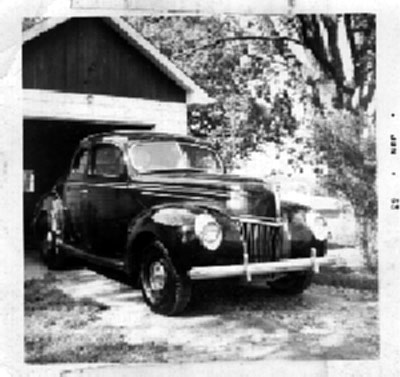
Iowa – Fall 1974: Left to Nature
Not to mention my brother’s old Buick …













































































